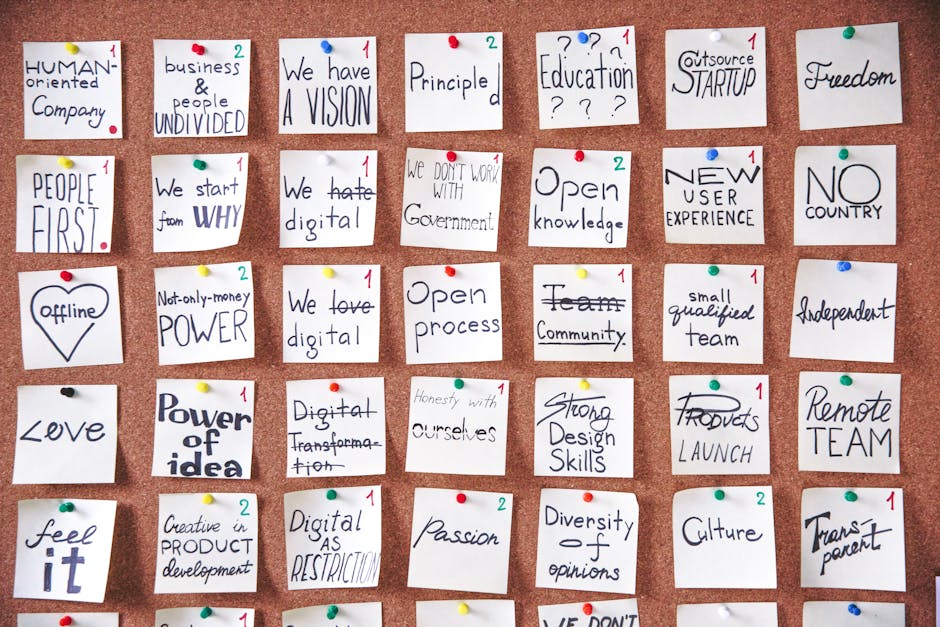How To Build An Mvp On A Budget
In the world of start-ups and entrepreneurship, the phrase ‘bootstrapping’ is often used to describe the process of building a business with limited financial resources. This idiom captures the essence of resourcefulness and ingenuity that is required when embarking on a new venture.
When it comes to building a Minimum Viable Product (MVP) on a budget, this same mindset can be applied. An MVP is a version of a product that allows entrepreneurs to test their ideas in the market with minimal investment.
In this article, we will explore practical strategies for building an MVP on a budget. We will discuss defining goals and scope, conducting market research and validation, utilising low-cost or free tools, prioritising features, rapid prototyping, gathering user feedback, and iterating based on that feedback.
By following these steps, entrepreneurs can effectively develop their products while keeping costs down and maximising their chances of success.
Key Takeaways
- Define clear goals and scope for your MVP to ensure you stay focussed and make the most of limited resources.
- Conduct thorough market research to understand your target audience and competitors, helping you make informed decisions about your MVP features.
- Utilise low-cost or free tools and resources to maximise your limited budget, such as open-source software, online platforms, and free trials.
- Prioritise features based on their impact and complexity, focussing on the most essential ones to create a viable MVP within your budget constraints.
Defining Your MVP Goals and Scope

The process of defining the goals and scope of a minimum viable product (MVP) involves establishing clear objectives and determining the specific functionalities and features that will be included in order to effectively meet user needs within a constrained budget. This initial step is crucial as it lays the foundation for developing an MVP that alines with both customer expectations and business objectives.
To begin, it is essential to define the target audience for the MVP. Understanding who your potential users are will help guide decision-making throughout the development process. By identifying their needs, preferences, and pain points, you can tailor your product to address these specific requirements effectively.
Setting success metrics is another vital aspect of defining your MVP goals. These metrics provide measurable criteria against which you can evaluate whether your product is meeting its intended purpose. They should be tied directly to your business objectives and reflect what success looks like for your organisation.
When setting success metrics, it’s important to consider both qualitative and quantitative factors. Qualitative measures may include user satisfaction levels or feedback gathered through interviews or surveys. On the other hand, quantitative measures could involve tracking key performance indicators such as user engagement rates or conversion rates.
By clearly defining your target audience and setting success metrics upfront, you establish a solid framework for building an MVP that meets user needs while staying within budget constraints. The next step in this process involves conducting market research and validation.
Conducting Market Research and Validation

Conducting a thorough market research and validation process is akin to laying the foundation of a sturdy bridge before embarking on a journey. This crucial step in building an MVP ensures that entrepreneurs have a solid understanding of their target market and can make informed decisions about their product’s features and scope.
One effective method for conducting market research is by conducting customer interviews. By engaging with potential customers, entrepreneurs can gain valuable insights into their needs, pain points, and preferences. These interviews provide an opportunity to identify any gaps in the market that the MVP could potentially address.
Another important aspect of market research is analysing the competitor landscape. Understanding who else is operating in the same space allows entrepreneurs to identify their unique selling points and differentiate themselves from competitors. By studying competitors’ products, pricing strategies, and marketing tactics, entrepreneurs can refine their own value proposition and position themselves effectively within the market.
To conduct customer interviews effectively, it is important to develop a set of relevant questions that elicit meaningful responses from participants. Additionally, entrepreneurs should consider using various channels to reach different segments of their target audience.
Conducting thorough market research and validation through customer interviews and competitor analysis is crucial for building an MVP on a budget. By gaining insights into customer needs and preferences while also understanding the competitive landscape, entrepreneurs can make informed decisions about their product’s features and positioning. This lays the groundwork for successfully leveraging low-cost or free tools and resources in subsequent steps towards building an MVP without compromising its effectiveness.
Leveraging Low-Cost or Free Tools and Resources

One effective strategy for maximising limited resources during the MVP development process is to leverage low-cost or free tools and resources available in the market. Start-ups and entrepreneurs often face financial constraints, making it crucial to adopt cost-effective marketing strategies. Fortunately, there are numerous tools and resources that can help achieve this goal while still maximising return on investment (ROI).
When it comes to marketing an MVP on a budget, digital platforms such as social media and content marketing provide affordable options with high potential reach. Social media platforms like Facebook, Twitter, and LinkedIn offer free or low-cost advertising options that allow businesses to target specific demographics based on interests, location, and other relevant criteria.
Additionally, creating compelling content through blogs or videos can help generate organic traffic to the MVP website without spending significant amounts of money.
In addition to digital marketing avenues, start-ups can also take advantage of various free or low-cost project management tools that facilitate collaboration amongst team members. Tools like Trello or Asana enable efficient task management and communication within the team, ensuring smooth progress throughout the development process.
Another way to save costs is by leveraging open-source software solutions instead of investing in expensive proprietary software. Open-source alternatives are often available for various aspects of MVP development including coding frameworks, databases, and design elements.
By utilising these low-cost or free tools and resources effectively, start-ups can maximise their ROI with limited resources while still achieving their desired outcomes for the MVP. Moving forward into prioritising features and functionality…
Prioritising Features and Functionality

An essential aspect of developing an MVP is effectively prioritising the features and functionality to ensure that the product meets the needs and expectations of users in a comprehensive and impactful manner. Maximising efficiency and finding cost-effective solutions are key considerations when determining which features should be included in an MVP.
To prioritise features, it is important to first identify the core functionalities that are necessary for the product to function properly. These functionalities should directly address the pain points or problems that users are experiencing. By focussing on these core functionalities, resources can be allocated more efficiently, allowing for a faster development process.
One effective way to prioritise features is by using a two-column, five-row table (see below) to evaluate each feature based on its impact on user experience and its complexity/cost:
| Feature | Impact |
|---|---|
| Feature 1 | High |
| Feature 2 | Medium |
| Feature 3 | Low |
| Feature 4 | High |
| Feature 5 | Medium |
By assigning each feature a value for both impact and complexity/cost, it becomes easier to determine which features should be implemented first. Features with high impact but low complexity/cost should be prioritised as they provide significant value without requiring extensive resources.
Prioritising features also involves considering user feedback and market research. Gathering insights from potential users can help identify the most desired features, ensuring that the MVP alines with their needs.
Prioritising features and functionality in an MVP requires maximising efficiency while finding cost-effective solutions. By identifying core functionalities, evaluating impact and complexity/cost through a table-like structure, incorporating user feedback, developers can create an impactful product within limited resources. Prioritisation sets the stage for rapid prototyping and iteration in order to refine and enhance the MVP further.
Rapid Prototyping and Iteration

Rapid prototyping and iteration play a crucial role in the development process as they allow for continuous improvement and refinement of the product, enabling developers to incorporate user feedback and optimise the user experience.
Rapid prototyping techniques involve creating a simplified version of the product that can be tested with users early on in the development cycle. This allows developers to quickly identify any useability issues or flaws in the design, which can then be addressed and improved upon.
There are several rapid prototyping techniques that can be utilised when building an MVP on a budget. One common technique is paper prototyping, where designers create basic sketches or wireframes of the product on paper. These paper prototypes are then presented to users who provide feedback on their understanding and interaction with the design.
Another popular technique is digital prototyping, which involves using specialised software to create interactive mock-ups of the product. These digital prototypes can simulate various features and functionalities, allowing users to interact with them and provide valuable feedback before investing significant resources into full-scale development.
Once a prototype is created, it is important to test it with potential users through various MVP testing strategies. This may include conducting useability tests where users perform specific tasks using the prototype while providing real-time feedback. A/B testing can also be employed by presenting different versions of certain features or designs to different groups of users and measuring their preferences or performance.
By rapidly iterating through these prototyping and testing processes, developers can uncover valuable insights about what works well for users and what needs improvement. This iterative approach ensures that each version of the MVP becomes more refined based on user feedback. In the subsequent section about gathering user feedback and iterating again, these insights will guide further improvements for an even better MVP without wasting resources unnecessarily.
Gathering User Feedback and Iterating Again

Gathering user feedback and iterating again is a crucial step in the development process, akin to refining a sculpture with chisels and brushes, as it allows for continuous improvement based on valuable insights from users.
User testing serves as an essential tool to gauge the effectiveness of an MVP (Minimum Viable Product) and identify areas that require refinement. By observing how users interact with the product, developers can gain a better understanding of its strengths and weaknesses.
To make the most of user testing and feedback analysis, consider the following:
-
Define clear objectives: Clearly define what you want to achieve through user testing. Identify specific metrics or goals that will help evaluate the success or failure of your MVP.
-
Choose representative participants: Select participants who represent your target audience to ensure that their feedback accurately reflects potential users’ perspectives.
-
Design a structured test plan: Create a well-structured test plan that outlines specific tasks for participants to complete while using your MVP. This will help gather consistent data across different sessions.
-
Analyse feedback systematically: Collect both qualitative and quantitative data during user testing sessions. Analyse this feedback systematically to identify patterns, trends, and areas for improvement in your MVP.
By continuously gathering user feedback and iterating based on insights gained from this feedback analysis, you can refine your MVP further with each iteration. This iterative approach allows for continuous improvement while remaining focussed on meeting users’ needs effectively.
Remember that every iteration brings you closer to creating an optimised product that satisfies your target audience’s requirements within budgetary constraints.
Frequently Asked Questions
How much time does it typically take to define MVP goals and scope?
In time management and project planning, defining MVP goals and scope typically requires careful consideration of various factors. The time needed for this process may vary depending on the complexity of the product, team dynamics, and stakeholder involvement.
It is important to allocate sufficient time for thorough analysis and deliberation to ensure clarity in defining the goals and scope of the MVP. Effective communication amongst all parties involved can streamline this process and promote efficient decision-making.
What are some common challenges faced during market research and validation?
Common challenges faced during market research and validation include:
- Gathering accurate and reliable data
- Identifying target customers
- Understanding their needs and preferences
- Analysing competitors’ strengths and weaknesses
- Ensuring the validity of the chosen market segment
The process requires meticulous planning, rigorous analysis, and constant adaptation to changing market dynamics. Without thorough research and validation, businesses risk developing products or services that fail to meet customer demands or face intense competition in saturated markets.
Are there any legal considerations to keep in mind when leveraging low-cost or free tools and resources?
Legal considerations must be taken into account when leveraging low-cost or free tools and resources. While cost-saving strategies are important, it is crucial to ensure compliance with intellectual property rights, licencing agreements, and data protection regulations.
It is advisable to carefully review the terms of service and privacy policies of these tools to avoid any legal issues. Additionally, seeking legal advice or consulting experts in the field can provide guidance on navigating potential legal pitfalls while minimising costs.
How do you prioritise features and functionality when building an MVP on a budget?
When prioritising features and functionality for building an MVP on a budget, it is important to consider the budget constraints and focus on essential elements that provide the most value.
Strategies for effective user feedback and iteration can also help in this process. By gathering user feedback early on, developers can identify which features are crucial and refine them accordingly.
This iterative approach allows for continuous improvement while keeping costs manageable.
What are some effective strategies for gathering user feedback and iterating again?
User engagement strategies are crucial for gathering feedback and iterating effectively.
One effective strategy is to conduct user interviews, where open-ended questions allow users to share their thoughts and experiences.
Another strategy is to utilise surveys or questionnaires, which provide quantitative data on user preferences.
Additionally, implementing user testing sessions can uncover useability issues and areas for improvement.
Successful iteration stories often involve incorporating user feedback into the product development process, resulting in a more refined and user-centred MVP.
Conclusion
In conclusion, building an MVP on a budget requires careful planning, research, and resourcefulness.
By defining clear goals and scope, conducting market research, leveraging low-cost tools, prioritising features, and iterating rapidly based on user feedback, entrepreneurs can create a functional product without breaking the bank.
It is ironic that a limited budget can actually force creativity and innovation, leading to better outcomes.
So embrace the challenge of building an MVP on a budget and see it as an opportunity for growth and success.
Contact us to discuss our services now!
